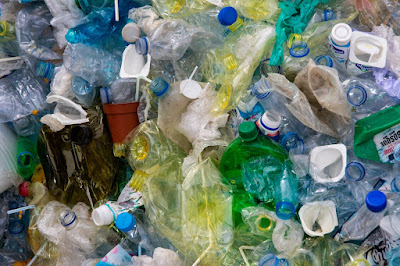The Environmental Impact of Plastic Straws and Why You Should Stop Using Them
Plastic straws have been a common item for many years, found in almost every restaurant and bar around the world.
However, the convenience of using them comes at a significant environmental cost. Plastic straws are one of the most commonly found items in the ocean, and they have a devastating impact on marine life.
So what is the environmental impact of plastic straws and why should you stop using them?
Firstly, let's look at the statistics surrounding plastic straws.
In the United States alone, it is estimated that 500 million plastic straws are used every day. That's enough straws to fill over 127 school buses each day or 46,400 school buses per year. Furthermore, according to a study conducted by the Ellen MacArthur Foundation, by the year 2050, there could be more plastic in the ocean than fish. This statistic is alarming and should be a wake-up call for all of us to take action.
Plastic straws have a significant impact on marine life.
They are often mistaken for food and ingested by marine animals such as sea turtles, birds, and fish. According to the Ocean Conservancy, plastic straws are one of the top 10 items found in ocean debris. Marine animals that ingest plastic straws can experience blockages in their digestive system, which can be fatal. Plastic straws can also release toxic chemicals into the ocean, which can cause further harm to marine life.
In addition to the impact on marine life, plastic straws also contribute to global warming.
Plastic straws are made from polypropylene, a type of plastic that is derived from fossil fuels. The production of fossil fuels contributes to greenhouse gas emissions, which are a major cause of global warming. Furthermore, plastic straws take hundreds of years to decompose, and when they do, they release harmful chemicals into the environment.
Now, let's look at some examples of the impact of plastic straws on the environment.
The Great Pacific Garbage Patch
The Great Pacific Garbage Patch is a vast area in the Pacific Ocean that is filled with plastic debris.
It is estimated to be twice the size of Texas and contains more than 1.8 trillion pieces of plastic. Plastic straws make up a significant portion of this debris. The Great Pacific Garbage Patch has a devastating impact on marine life, as well as the overall health of the ocean.
Sea Turtles
Sea turtles are particularly vulnerable to plastic straws.
They often mistake plastic straws for food and ingest them, which can cause blockages in their digestive system. This can be fatal for sea turtles, as they are unable to digest food properly. According to a study by the University of Queensland, it is estimated that around 50% of sea turtles have ingested plastic.
The Impact on Landfills
Plastic straws take hundreds of years to decompose, which means they stay in landfills for a very long time.
As more and more plastic straws are discarded, landfills are becoming overwhelmed with plastic waste. This not only takes up valuable space but also contributes to greenhouse gas emissions, as the plastic in landfills releases methane as it decomposes.
Solutions
So, what can we do to reduce the environmental impact of plastic straws?
The best solution is to simply stop using them. There are many alternatives available, such as paper straws, metal straws, and even reusable silicone straws. Many restaurants and bars have already made the switch to more sustainable options, and there is a growing movement to ban plastic straws altogether.
Plastic straws have a significant impact on the environment, particularly on marine life. They contribute to ocean debris, global warming, and take hundreds of years to decompose.
By simply choosing to stop using plastic straws and switching to more sustainable options, we can all make a positive impact on the environment. It's important to remember that small actions can make a big difference, and by making a conscious effort to reduce our use of plastic straws, we can help to create a cleaner, healthier planet.
Furthermore, we can also spread awareness about the impact of plastic straws to our friends, family, and community. By educating others about the negative effects of plastic straws, we can encourage them to make more sustainable choices. We can also advocate for change at a local level by supporting initiatives to ban plastic straws in our communities.
Finally, we can also support companies and organizations that are committed to sustainability. Many companies are taking steps to reduce their use of plastic straws and other single-use plastics, and by supporting these businesses, we can help to create a more sustainable future.
The environmental impact of plastic straws is significant and cannot be ignored. From the Great Pacific Garbage Patch to the impact on marine life and landfills, plastic straws have a devastating effect on the environment. By making a conscious effort to reduce our use of plastic straws and switching to more sustainable options, we can all play a part in creating a cleaner, healthier planet for future generations. So, the next time you're at a restaurant or bar, think twice before reaching for a plastic straw and choose a more sustainable alternative instead.
(The image source is https://www.pexels.com/photo/pink-and-green-pipe-90911/ )




Comments
Post a Comment